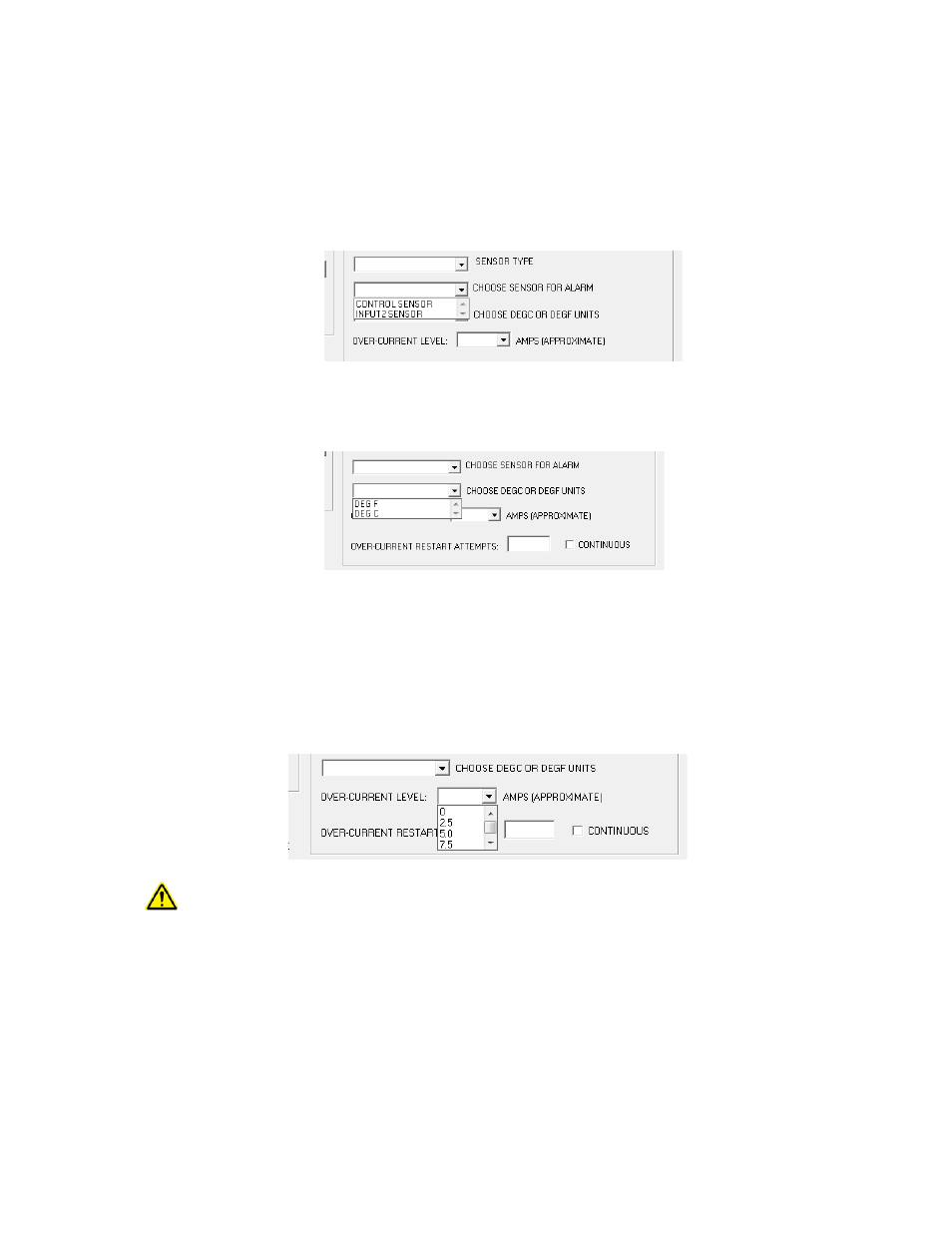Note: this is not an analog current limit feature – TE Technology TC-36-25-RS232 User Manual
Page 22

2.9
CHOOSE SENSOR FOR ALARM menu key:
a) CONTROL SENSOR: the primary sensor temperature is monitored for alarm conditions
b) INPUT 2 SENSOR: a secondary thermistor (see “Controller Wiring Diagram”) can be attached to the heat sink or
other object in order to detect over-temperature conditions. (Note: the INPUT 2 SENSOR secondary thermistor
cannot be used if you are using a potentiometer or voltage/current levels to control the set point.)
2.10 CHOOSE DEGC OR DEGF menu key:
a) DEG F: all temperatures are read/interpreted in degrees Fahrenheit.
b) DEG C: all temperatures are read/interpreted in degrees Celsius.
2.11 OVER CURRENT LEVEL menu key:
This selects the level at which the over-current protection for the TE device shuts the output off. This level is
adjustable in 2.5 A increments, and the allowable levels range from 0 A to 40 A. The controller will automatically
attempt to restart the output (either continuously or a fixed number of times) per the conditions set as described
in section 2.12. During the restart attempts, the output will still be shut down each time if the over-current level is
reached again. If a fixed limit of attempts is reached the output will be disabled until a “latch clear” signal is sent
(see section 2.7) or the controller is turned off and then on again.
NOTE: THIS IS NOT AN ANALOG CURRENT LIMIT FEATURE!
The over-current value is approximate; the actual current value the controller shuts off at may differ by 3 A or
more from the selected over-current level. Also, it is normal to have an output current surge when the direction of
current flow is instantaneously reversed to a TE device that has a temperature difference established across it.
When this happens, the “apparent electrical resistance” of the TE device is lower because the Seebeck back-
voltage does not immediately reverse polarity. The reversal of current will eventually reverse the temperature
difference across the TE device (and then its Seebeck back-voltage will likewise change polarity). As the
temperature difference reverses, the current will revert back down to a steady-state level.
22
